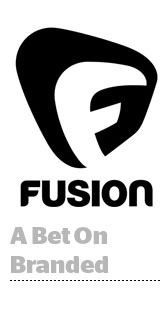 When Jason Wagenheim joined Fusion in May as its head of revenue, the Univision-owned pub was regrouping after a tumultuous year.
When Jason Wagenheim joined Fusion in May as its head of revenue, the Univision-owned pub was regrouping after a tumultuous year.
ABC had handled ad sales until the joint venture with Univision split in April. In addition to the partner’s exit, Fusion dealt last year with reports of dismal traffic numbers.
But Fusion has steadily gained traction. In May 2015, the first month comScore tracked Fusion, it posted 3 million uniques. In July, the site posted 11.5 million uniques. Wagenheim said growth came from efforts of its audience development team, which looks to the usual suspects –like Facebook – to seed out its articles to a broader audience.
Though Fusion sells a smattering of high-impact banner ads – some of them programmatically – as head of revenue, Wagenheim’s main focus will be to create branded content. Fusion expects programmatic to make up 10% to 15% of its revenue, with branded content and custom banners making up the rest.
Wagenheim has homed into Fusion’s market: “color brave” advertisers attracted to its “polycultural” audience. The term refers to a group of millennials who “have a high attachment to the culture they come from, but a high openness to accept other cultures,” he said.
“We are the only branded content studio that can help brands tell their stories through this lens of diversity that is being celebrated and rewarded,” he said. Fusion’s advertisers include Verizon and the Legendary Pictures film “Warcraft,” and Wagenheim reported Fusion is on track for a strong Q4.
Fusion enters a branded content market with increased competition. Many advertiser RFPs ping a dozen publishers to come up with big ideas, but just one idea wins.
“Advertisers have the appetite to work with one to three publishers on the larger branded content campaigns. That’s the new normal,” said Wagenheim, a former publisher of Condé Nast’s Teen Vogue.
Also, advertisers are moving away from a CPM model (where they paid for the snippets of their article previews) to cost per view as the currency for branded content. Brands can get 1 million views from a publisher Fusion’s size or one several times larger. Still, “scale definitely matters,” Wagenheim said.
For effective distribution of branded content, Fusion tests up to 12 combinations of text and creative on Facebook, a process it dubbed FACT (Fusion Audience Creative Testing). The winning combination goes out wide on the social platform. Programs tested by Fusion average 40% higher share rates, and click-through rates rise 50% to 100% while reach improves 20%.
Scaling via distribution across Univision’s other digital properties, which include The Onion, The Root, Flama and, soon, Gawker, is still just an idea. And while Fusion’s presence includes a television network, Univision handles those sales. In the future, as early as the fourth quarter, the two groups will start collaborating on deals that span TV and digital.
Wagenheim’s higher-ups are still sorting out how everything will work together. “Univision is betting on scale and diversity,” he said, a teasing glimpse to what the media company might build.












